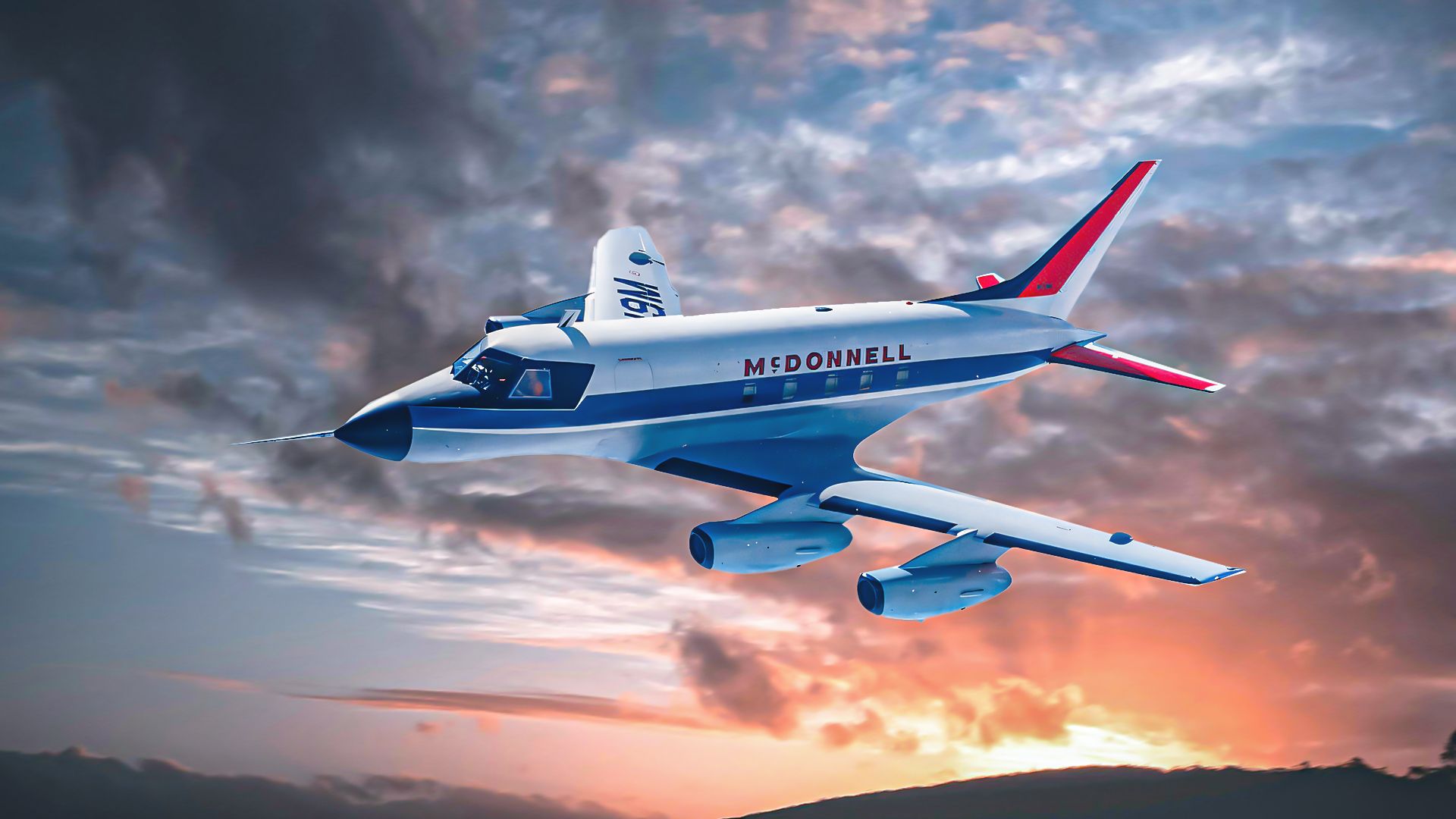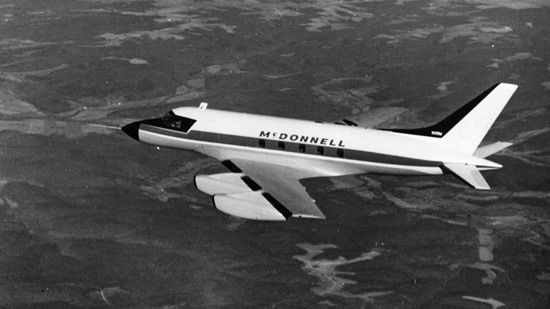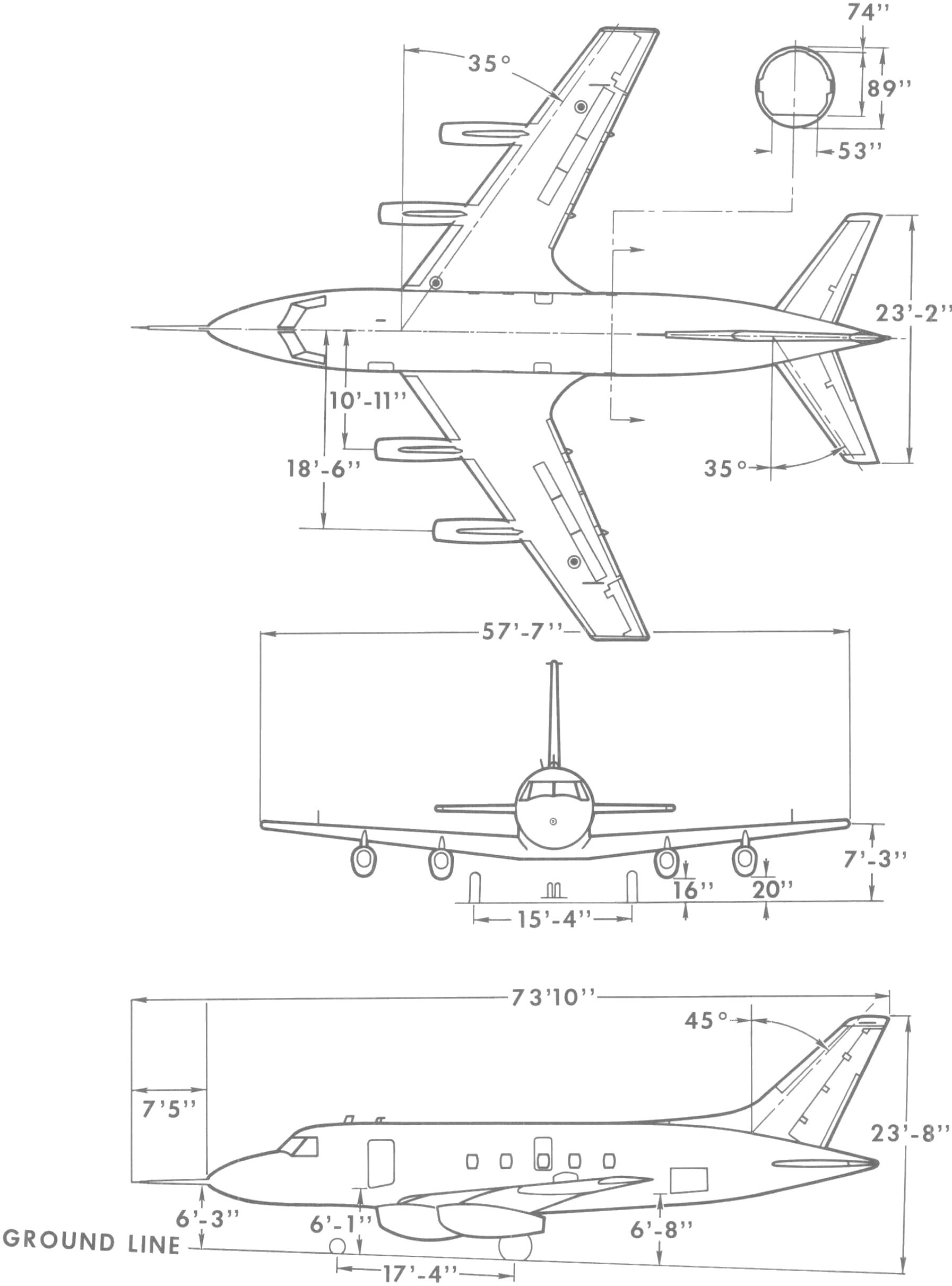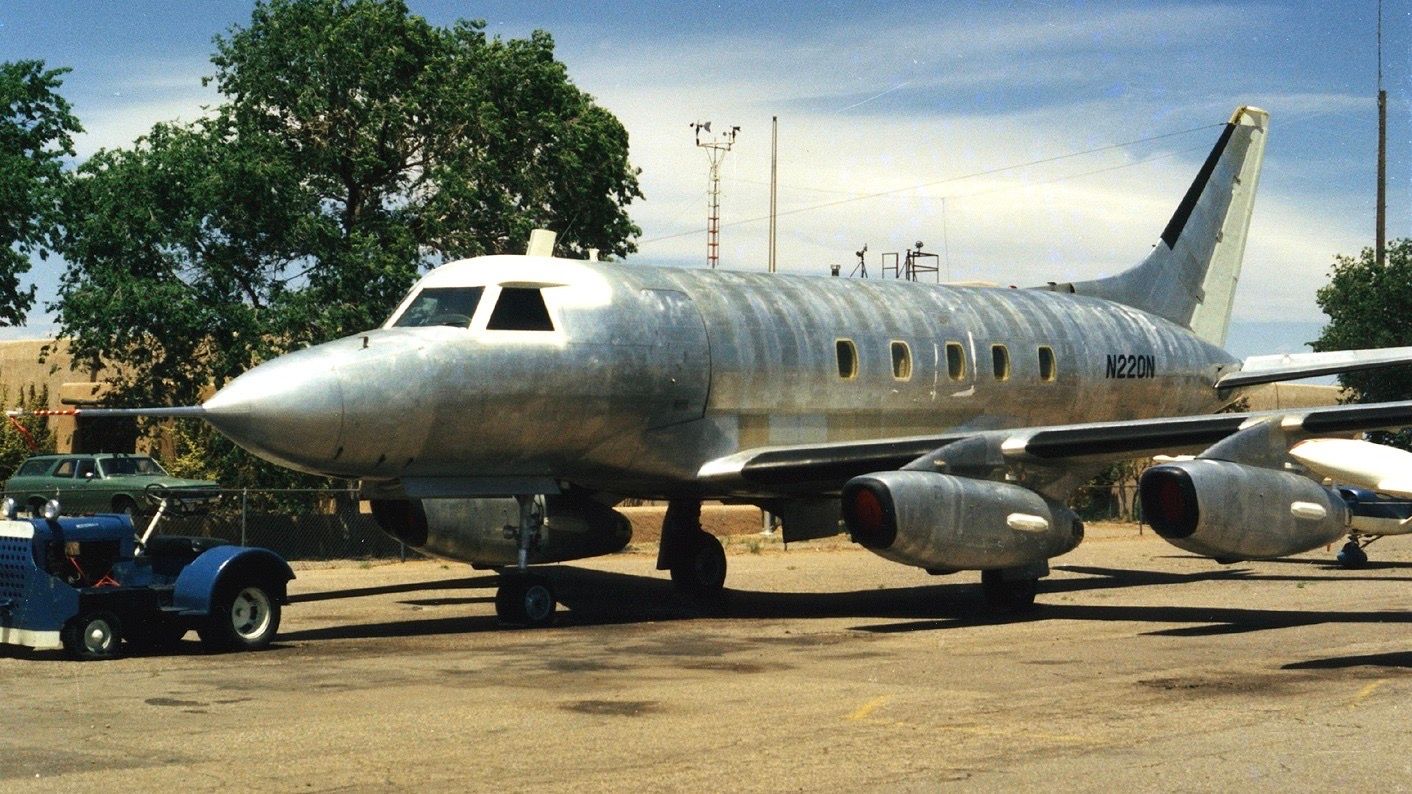Summary
- Delayed due to engine cancelations, the McDonnell 220 had a variety of uses, but only one was built.
- FAA-certified as the first non-airline jet in 1960, intended for Pan Am, but sold for $1 due to lack of orders.
- VIP transport turned research subject, the McDonnell 220, has been abandoned since 1965 and was sold again in 2022.
In the late 1950s and early 1960s, McDonnell Aircraft developed its first business jet. The McDonnell 220 was unusual in that it had four pod engines that sat underneath a low wing. Only one of the aircraft was built, and it was marketed to civilian buyers prior to the company’s merger with Douglas Aircraft to form McDonnell Douglas. It could be turned into a 10-seater luxury business jet or a practical 29-seater executive jet. So, what was wrong with the McDonnell 220, one of the first business jets ever, and why did it fail?
The original plan
It was originally designed in 1957 for the US Air Force Utility Cargo and Experimental contract and was to compete with the Lockheed JetStar. McDonnell Aircraft had its eye on commercial sales too, but had never built a civilian aircraft.
The company had invested over $10 million into the project and started to promote the aircraft, but the founder, James Smith McDonnell was unwilling to commit to full production of the aircraft until they received some sizable orders.
About the aircraft
The original 119 model had a 2,200 nautical mile range or 2,500 miles or 4,100 kilometers. It could fly at a speed of 550 knots (630 mph or 1,020 kmh). The aircraft had a wing sweep of 35 degrees and needed 3,930 feet for take-off, and had a landing roll of 1,800 feet. The aircraft had conventional ailerons and a combination of split flaps and Fowler flaps for slow speed control.
- Range: 2,200 nautical miles
- Top speed: 550 knots
- Capacity: 10-29 passengers depending on configuration
The wings had spoilers that also acted as speed brakes. The engines were Westinghouse J34 turbojets. In the cabin, the floor was fitted with tracks so that the interior could be moved around to suit different missions. It could be used for medical evacuation or for training purposes, as well as a business jet.
Aircraft Specifications
General characteristics
- Capacity: 10–29 passengers depending on cabin layout
- Length: 66 ft 6 in (20.27 m)
- Wingspan: 57 ft 7.25 in (17.55 m)
- Height: 23 ft 7.75 in (7.21 m)
- Wing area: 550 sq ft (51.10 m2)
- Empty weight: 23,213 lb (10,529 kg)
- Gross weight: 40,928 lb (18,565 kg)
- Max takeoff weight: 45,328 lb (20,560 kg)
- Powerplant: 4 × Westinghouse J34-WE-22 turbojets, 2,980 lbf (13.3 kN) thrust each as installed in prototype; production aircraft would have used Pratt and Whitney JT12 or General Electric CF700.
Performance
- Maximum speed: 560 mph (901 km/h, 490 kn) at 38,000 ft (11,580 m)
- Cruise speed: 520 mph (837 km/h, 450 kn)
- Range: 2,340 mi (3,765 km, 2,030 nmi)
- Service ceiling: 44,900 ft (13,685 m)
- Wing loading: 74.4 lb/sq ft (363.3 kg/m2)
- Thrust/weight: 3.4 lb/lb st (3.4 kg/kgp)
Delays and setbacks
The prototype was delayed as the original Fairchild JB3 engines were canceled. It was finally completed by 1959 and fitted with Westinghouse J34 turbojets for the test fight. The first flight of the McDonnell 220 took place on February 11, 1959.
The Air Force rejected the McDonnell 119, in favor of the Lockheed JetStar, believing that the low-mounted engines could receive damage from foreign objects.
Despite the setback, McDonnell Aviation continued to market the aircraft and changed its name to the McDonnell 220 to celebrate the company’s second 20 years in business. It was marketed in both the luxury 10-seat and 29-seat configurations.
They planned to use the Pratt and Whitney JT12 or the General Electric CF700 engines as an alternative to the original engines.
A new turn to events?
The McDonnell 220 received Federal Aviation Administration (FAA) certification in October 1960, making it the first business non-airline jet to be certified. With this turn of events, McDonnell Aviation had received a provisional deal with Pan American World Airways for a five-year lease of 170 of the jets.
Unfortunately, no other orders were received. This put McDonnell Aviation in a difficult position, as they could not offer the aircraft to Pan American World Airways at an attractive enough price to seal the deal. Pan American settled for the Dassault Breguet Mystère 20 instead of the McDonnell 220. The aircraft’s future was now in jeopardy.
What happened to the aircraft?
Seeing that only one aircraft was produced and the founder’s decision not to produce the aircraft until firm orders were placed, the aircraft became VIP transport for the company. In March 1965, it was sold for a token payment of $1 to the Flight Safety Foundation (FSF) in Phoenix, Arizona, where it was used for research purposes and for performing crash survival tests.
The aircraft was sold five years later to Allied Aircraft Sales in Tucson, Arizona for $10,000. They then sold it to Richard Durand of Westernair in Albuquerque, where it was flown against McDonnell’s contract with FSF, which stipulated that the aircraft would not fly again. It was left derelict at Alburquerque. A new owner bought the aircraft and renovated it. It was last seen stored at El Paso International Airport. In January 2022, the aircraft was sold again to an unknown owner.




